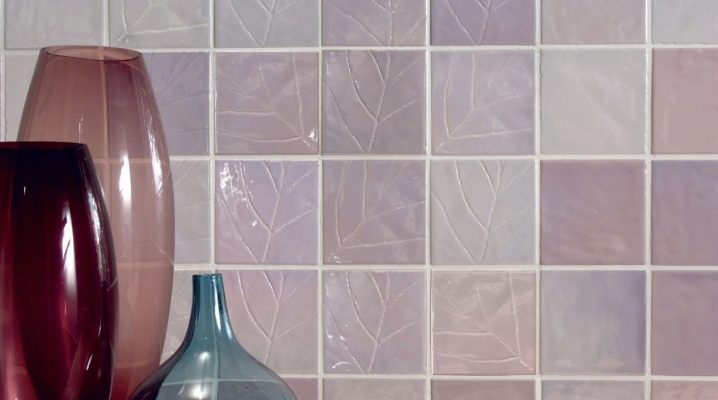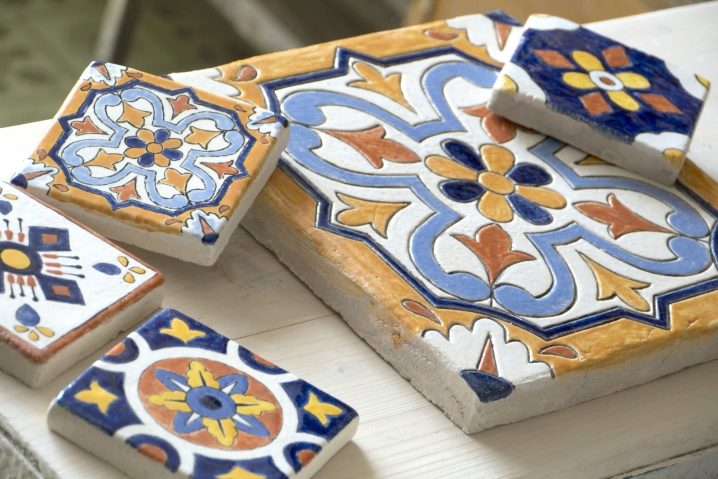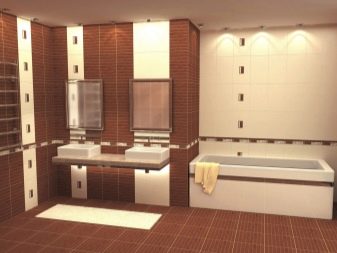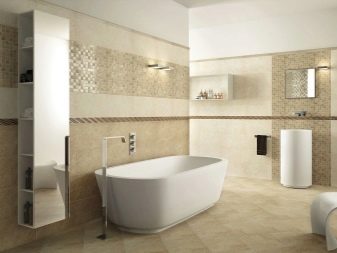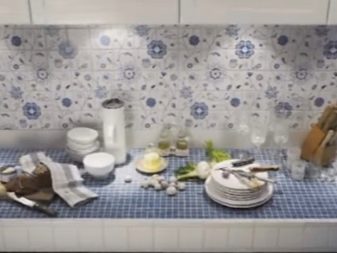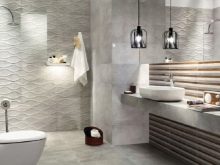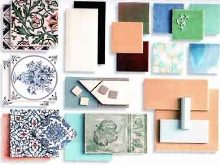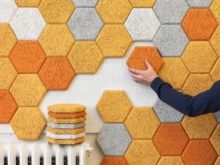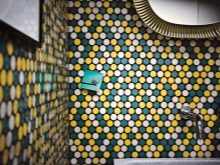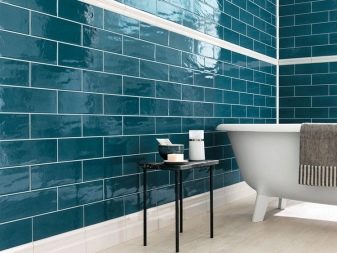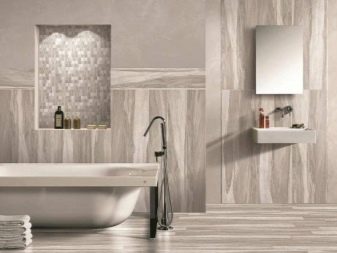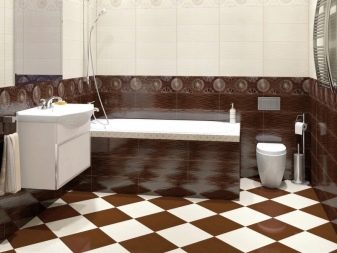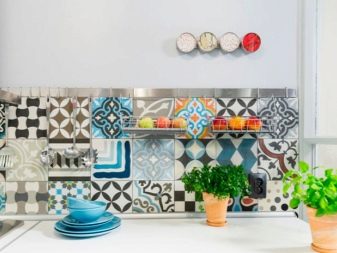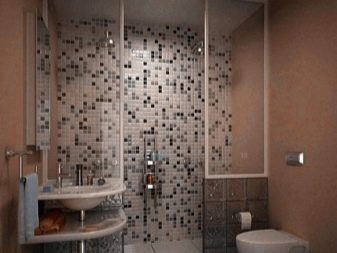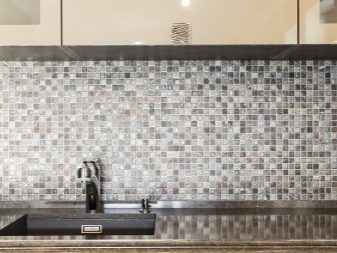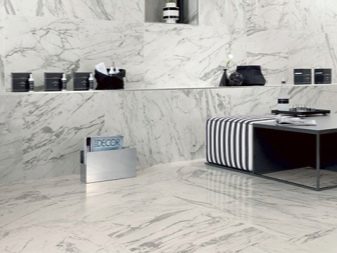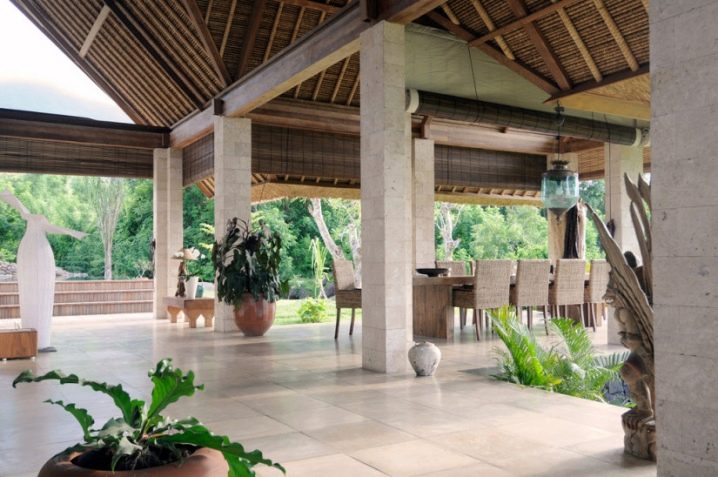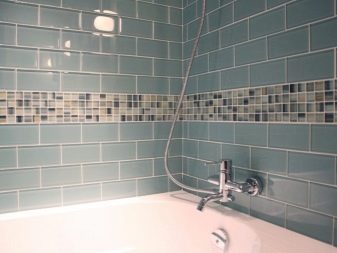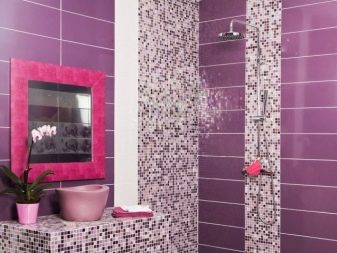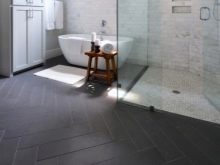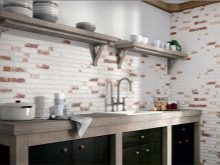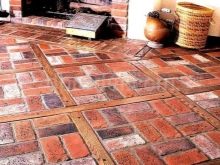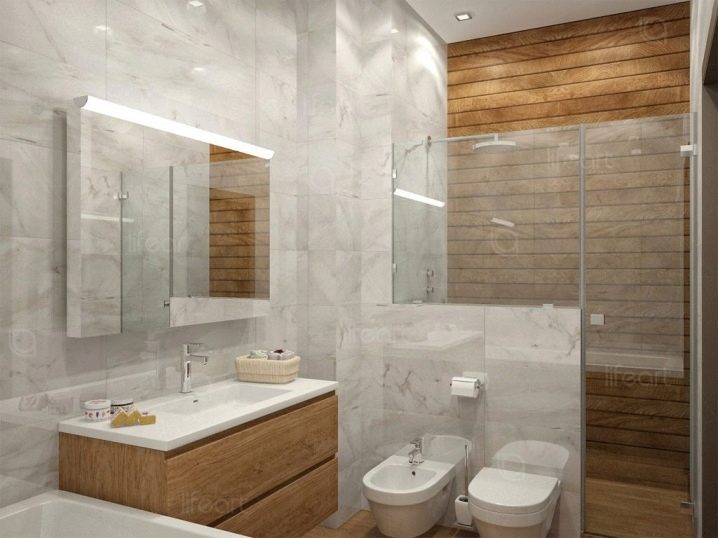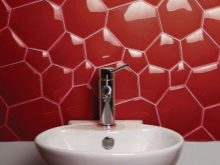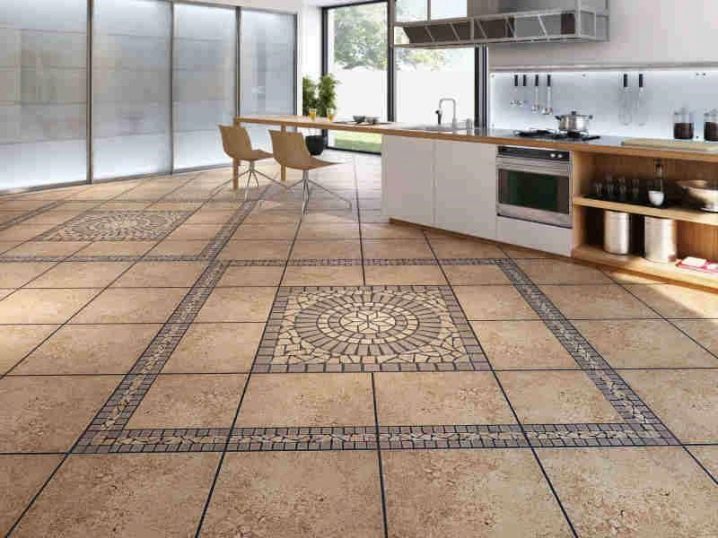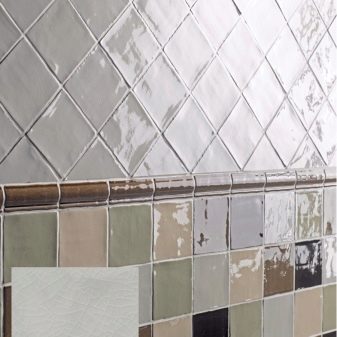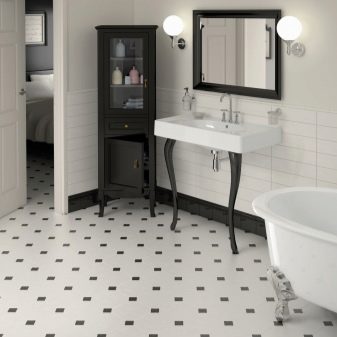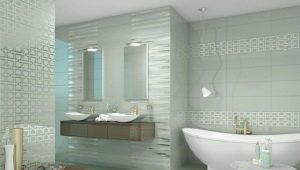Standard tile sizes
Choosing a reliable coating for walls and floors, it is impossible not to consider ceramic tiles or tiles. Such products have a number of properties that are necessary when finishing rooms with high humidity or a high degree of permeability.
The choice of models today is represented by a variety of products. In this case, one of the criteria for difference is size.
Coverage Features
Ceramic tile has a number of properties that allowed it to become one of the most popular materials for finishing works:
- Moisture resistance. The special porous structure does not allow water to penetrate deeply into the base, but it does not allow moisture to linger, it dries out without difficulty. Glazed surface has water-repellent properties.
- Noise insulation. The thicker the ceramic, the better the insulating properties.
- Durability. Ceramic tiles are considered to be one of the most durable materialsThis rule applies especially brightly to wall coverings.
- Resistance to mechanical stress. There are special indicators of the strength of tiles for bending and breaking, which can be found on the original packaging.
- Resistance to household chemicals.
- Easy care. For small soiling, wipe off the coating with a wet cloth.
- Antistatic - the tile does not attract dust.
- High thermal conductivity. This feature allows you to install under a decorative coating system of warm floors.
- It has dielectric properties - does not conduct electricity.
- The tile does not ignite and does not support burning.
- Environmentally friendly materialsafe for health.
- Presentable appearance.
- In addition, it can be noted that ceramic tiles and tiles do not swell, are not deformed, practically do not wear out.
Due to the variety of design, you can choose a product for any stylistic orientation of the room.
Different layouts, combinations with decorative elements and inserts in the form of panels will allow to make the design original and interesting.
There are different types of tiles.The price of the product depends on the composition, appearance and design. Luxury models made in Italy, Portugal, France have a special design and can even be made to order according to the individual requirements of the buyer. These premium products have a high cost. There are budget options among both foreign firms and domestic producers.
Tile Shapes
The shape of ceramic tiles can be square and rectangular. However, manufacturers of high-end products offer models of hexagonal shape, imitating Moroccan print, round and oval in combination with fragments that fill the empty space, rhombuses, tile-scales and many others.
Due to its unusual shape, a difficult game of light transitions and patterns on the wall or on the floor is obtained, various visual effects are achieved, a certain style is maintained.
Most often in the interiors there is a tile in the shape of a rectangle.. Moreover, its shape can aspire to the square, and be very elongated. Due to its parameters, tile can solve a number of spatial tasks. Vertically he lifts the ceiling and pulls the roomhorizontally - expands the space, makes it more spacious, which is very important for a bathroom or a toilet of modern apartments.
The square tile is a classic of the genre.. Small fragments look great, which can be staggered, playing with color, rotated 90 degrees, making walls and a floor in the form of rhombuses, and square models are good in patchwork style and with various oriental prints.
Standard sizes
Tiled tiles of the old modification had a narrow size range. Currently, manufacturers are ready to release products that can satisfy any consumer.
Tile parameters in different collections are so different that it is not easy to select specific standards, but the most popular sizes can always be found on sale.
Small square tiles
The classic dimensions for such a tile are sides of 60, 90 and 120 mm, thickness - 7-10 mm. Such parameters of products can be found in the design of the walls and floors. The smallest models look like a mosaic, it turns out a very elegant and comfortable interior for a bathroom or toilet, and such a tile is perfect for an apron work area in the kitchen.
Square tiles of large and medium sizes
The sides of one product can be equal to 180, 200, 240, 300, 400, 600 mm. Elite models can reach 1000 and 1200 mm. The larger the tile, the greater its thickness.. This is necessary to ensure the strength of the ceramic at fracture. For medium-sized models, it ranges from 10 to 12 mm, for large-format ones - 13-15 mm.
Taking into account the increase in the format, the weight of one product also changes. Thick heavy tiles of 1000 and 1200 mm are mainly designed for flooring. Often, the collection of dimensional models are stacked butt joint without a seam. Thanks to the seamless technology, the surface of the floor looks like solid monoliths, the polished glazed surface reflects the light, makes the room spacious and bright. It is noteworthy that in this case even a black or dark tile does not look gloomy, rather solemnly and nobly.
Facing tiles or porcelain tiles of medium size are often chosen for outdoor decoration - lay out a terrace, garden paths, an entrance area or a recreation area. It should be borne in mind that for street work it is necessary to choose the appropriate models of tiles and gluethat are resistant to temperature changes, hardy, not afraid of high humidity.
You can find the combined options of small and medium format tiles. Then on the walls or floor organize the original drawing. For example, large-sized models are mounted in the center and along the perimeter, and between them a border is made of small tiles with a pattern. In this case It is important to consider not only the comparability of sizes, but the width of the seam between the elements, then the drawing will not fail and will look aesthetically pleasing.
Another combination method is when a central wall in a bathroom is laid out with a mosaic of 60x60 mm, and the side walls with large models of 600x600. It is important that the materials match stylistically and match in color.
Narrow rectangular tiles or small rectangular tiles
Standard sizes: 90x60, 120x60, 180x60, 240x60, 360x60 mm, also models with narrow side 90, 120, 180, 360 mm. There are options with the size of the long side equal to 20, 23, 33 cm, depending on the manufacturer and collection. The thickness of this sample is 7-10 mm.
Long narrow models are quite popular.. They are used in the decoration, as well as when laying "herringbone". Ceramics imitating brickwork can be attributed to such a tile.A very fashionable effect, which has gained popularity in the design of kitchen aprons, smoothly extends to other rooms.
If for walls to a similar type of masonry, glazed shiny models of various colors, having a convex shape, are applicable, then products with a rough surface are mounted on the floor, which really look like a brick in texture.
Large rectangular tiles
The most common sizes are 200x800, 200x1200, 360x1200, 600x1200, 750x1500 mm. The thickness of such a tile is about 12-15 mm. Such dimensions can only boast expensive luxury tiles. Considering the weight of each product, it is recommended to select a special glue with a high adhesion index.
The rectangular tile of the big sizes perfectly looks not only the continuous monolith, laid out on seamless technology. One of the most popular ways of finishing a bathroom with tiles is a combination of textures and colors.. For example, long narrow light strips of ceramic tiles with imitation of marble are well combined with products of similar size, made in brown with the texture of wood.
Other geometric shapes
Unusual, sometimes irregular tile shapes are always small. The distance between the extreme points is from 150 to 250 mm.
Only given the small parameters, you can appreciate the original and amazing shape.
How to choose?
When choosing the parameters of ceramic tiles should be repelled from the dimensions of the room for which it is intended. In terms of interior design, large-sized products look best in spacious rooms.. Only with the large open space, you can fully convey the idea of such a luxurious finish. In addition, in small toilets or bathrooms, ceramic tiles of this size will have to be cut a lot, therefore, a lot of waste will appear, and the end result may be disappointing.
There are models of tiles that are stacked on seamless technology. When choosing such a finishing material for walls and floors, it should be borne in mind that it is extremely difficult to work with it: to achieve a smooth, smooth surface, a certain level of skill and experience is required. You should not take up the business yourself if there is no confidence in your professionalism.
Large format tiles are quite heavy. If this characteristic is not significant for laying ceramic floor products, then this fact should be taken into account for laying wall models. It is necessary to choose tile adhesive of the second class - C2. In such a mixture, the adhesive properties are better, that is, the coupling with the base is more than 1 MPa, and such a composition does not allow the tile to “crawl”, disrupting the pattern.
Medium and small tiles fit in small rooms perfectly. Square models can be stirred not only parallel to the walls, but also at an angle of 90 degrees. Thus, the geometry of the room is transformed and much more complicated, but it should be borne in mind that the material consumption in this case is higher, because you have to cut a lot of details.
For laying ceramic products no glue with enhanced adhesive properties is required. A large number of miniature fragments complicates the process of finishing, increases the time of execution of the work. Small elements often produce only inserts in the form of decor, combined with tiles of medium size.
The size of the tile can be chosen based on practical considerations: calculate the parameters of the tile so that it is as complete as possible without cutting cut into the dimensions of the room. However, the selection should take into account the width of the seam between the products, as well as discrepancies declared on the packaging values with the actual data. They may differ by several millimeters, with each batch having individual differences.
Thus, when choosing a tile, as well as within a few days after purchase, consider:
- Features of the room.
- Design idea.
- Using a computer program to make a design project with an estimate (often this service is provided by the seller).
- Purchase tiles from one batch (batch number is indicated on the package).
- Measure the actual tile size with a centimeter or a ruler.
- Pick up the glue according to the weight of the ceramic, as well as tint.
- Evaluate your strengths, consider hiring a professional master.
- Inspect each tile for the presence of marriage, so that you can make an exchange.
- Do not start finishing work until the material has heated or cooled to room temperature.
Tips for choosing tiles - in the next video.
